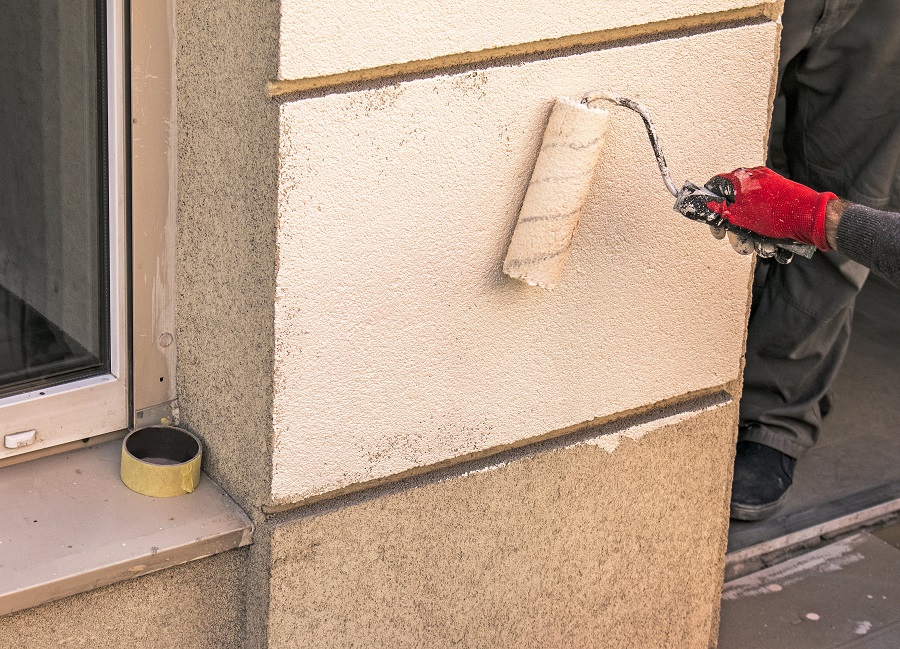Winter Painting Recommendations: Do's and Don'ts

You can paint the interior of your home in any season. However, you need to pay attention to weather and humidity conditions for exterior house painting to get the job done well. So painting your home's exterior is not a task that can be done at any time. You have to adjust your project to the weather and look for the best conditions to ensure the perfect job. Winters in Australia are generally cool, with temperatures as low as 5 degrees Celsius. You can also experience snowy nights during the winter months in Australia. June and July are usually the coldest months. While freezing temperatures can complicate exterior painting projects in other countries, winter in Australia is actually the perfect time to paint a home.
If you're considering painting your home, here are some winter painting factors you need to keep in mind. However, we would like to add here that choosing the right paint and service for an exterior paint job is an essential step.
Firstly, Keep the Surface Temperature in Mind
It is well known that most coatings do not dry well at low temperatures and high relative humidity (RH). The impact of surface moisture on material life and performance is poorly understood. On the other hand, Moisture forms on surfaces when warmer, moist air comes in contact with it, known as condensation. Moisture will cause the unprotected steel to rust. In addition, moisture can be trapped between the coating and the substrate, which can cause premature failure of the applied system.
So if you've ever tried painting a surface first thing in the morning, you know that the wall temperature in your home matters a lot. Your walls can be significantly colder than the air temperature around your property. So you should always set aside an early part of the day for your outer walls to warm up. When painting in the winter, you should time the actual painting in the middle of the day. This will give your walls plenty of time to warm up in the morning sun. This will also provide the masonry or varnish with a chance to dry before the sun goes down.
Track the Weather before Scheduling
Before you start working on your painting project, make sure to check your local forecast and find a period of several days when temperatures will be highest and the sun out. You'll need a few days in a row when the temperature doesn't drop below the minimum for the paint you're using, as you'll also need to consider drying times for multiple coats of paint. Plan out each coat of colour as the sun hits the area you're painting. Direct sunlight rapidly increases the surface temperature of most building materials. In the hot season, it should be protected from sunlight, but it should be painted in direct sunlight in the cold season.
Don't:
Always avoid extreme heat or air conditions. Most products are tested over a range of temperatures to find drying times and application characteristics. More information on weather notes can be found on the product data-sheet.
Be Careful with Temperature Fluctuation
If the temperature drops too quickly at night, there is an increased risk of dew forming on the exterior surface, which can cause problems if it soaks into the unsecured paintwork. Ideally, the outdoor temperature range should not be so extensive that moisture will develop on the surface. Too much moisture on an untreated surface can lead to the possibility of staining and even adhesion problems. If the temperature range is significant, consider using paint with moisture-resistant technology; it helps the colour strengthen its moisture resistance for two hours instead of the usual four.
In a nutshell, although you may see many other paint crews around Indianapolis during the summer months, painting the exterior of your home in the winter can be done - especially if you take precautions and understand the environment. Consult a professional paint company to guide you through the process.
Another way to avoid cold temperatures is to create bubbles over the area you want to paint. Using plastic tarps supported by a 2x4s frame, you can cover the area you wish to paint entirely and use a heater to raise the temperature between 15 and 20 degrees Celsius. Remember that you must maintain the temperature in the bubble throughout the drying period. It is also essential to be safe and ensure the area is adequately ventilated and not left unattended while the heater is on.
Don't:
Condensation during the paint application can affect the chemical curing of these products, resulting in loss of shine. Do not paint in direct sunlight or when the base coat is too hot. Residual heat from the surface can adversely affect any paint product's application and drying properties. This can lead to poor flow and flatness, rapid drying, cracking and loss of shine. We recommend measuring the surface temperature with a surface thermometer.
Use Paint Additives Strategically

Paint can become thicker in cold weather, which can be problematic for relatively inexperienced painters. Working with a thicker coat makes it much more difficult to spread the paint evenly and can lead to streaks, which is clearly not ideal. An excellent way to get around this problem is to use an adhesive or paint conditioner, which may not help the paint adhere to the surface but will make it easier to apply and improve coverage. We strongly recommend this if you are using water-based or rubber-based paint. Remember to always practice safety and not attempt to paint in less than ideal weather conditions.
Don't:
A small amount of additive can significantly improve coating efficiency and performance and can also improve coating performance and contribute to product customisation.
However, coating too soon can cause the finish to wrinkle, blister and lose shine. So make sure you have a trusted house painter to help you.
Lastly, Choose Specialty paint and Quality Painters
In the end, choosing the right painter and quality paint will make all the difference. If you're concerned that exterior paint won't dry quickly enough in unpredictable weather conditions, you should look for paints and primers specifically formulated for cold temperatures. Some paint additives contain chemicals that increase the frost resistance of the paint, helping the colour to dry in cold weather. Since cold temperatures can make paint stickier, you can also use additives to achieve a professional texture. In addition, they can prevent your surface colour from thickening and allow you to achieve a nice smooth finish.
The better the paint, the less sensitive it is to environmental factors such as temperature and humidity, making winter less difficult. Premier Paints Dulux accredited painters use the industry's best paint materials for interior and exterior paint jobs.
Don't:
Oil-based or alkyd paint fumes are highly flammable. Do not use a bare flame heater if you work with oil paint in bubble construction. Avoid applying two-component paints or top coats late in the afternoon or when relative humidity exceeds 80%, as these products are particularly sensitive to moisture.
Final Words
Some home improvement projects require a professional exterior paint job, especially in winter. More than simply putting on a fresh coat of paint, there's a lot more to it: waterproofing, levelling, plaster repair, protection and proper emulsion to ensure a good finish, and more. Additionally, painting contractors tend to be locals, so they have accurate information on the best conditions, weather influences, etc.
So, in short, painting your home requires proper planning, just like with any significant home improvement project. And as the winter is already knocking on the door, we recommend you get a residential painting consultation for your exterior wall painting project in Sydney that you can't wait to get started. Contact Premier Painting Company's residential painting experts for a high-quality, hassle-free painting experience with excellent workmanship this winter. Give your home a quick face-lift for the upcoming summer!










